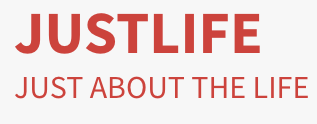Auto insurance is a critical component of vehicle ownership in the United States, providing financial protection against accidents, theft, and other unforeseen events. However, understanding the dynamics behind auto insurance rate increases can be complex. This extensive article delves into the various factors influencing auto insurance premiums, trends observed in recent years, and what consumers can expect moving forward.
Introduction
The landscape of auto insurance is continually evolving, shaped by economic conditions, regulatory changes, and consumer behavior. As we enter 2025, drivers are experiencing a mix of relief and concern regarding rising premiums. This article aims to provide a comprehensive understanding of auto insurance rate increases in the USA, focusing on the underlying causes and implications for consumers.
Overview of Auto Insurance in the USA
The Importance of Auto Insurance
Auto insurance serves as a financial safety net for drivers, covering costs associated with accidents, injuries, and property damage. It is not only a legal requirement in most states but also a crucial aspect of responsible vehicle ownership.
Types of Auto Insurance Coverage
Understanding the different types of coverage is essential for comprehending how premiums are calculated. The primary types of auto insurance include:
- Liability Coverage: Covers damages to others if you are at fault in an accident.
- Collision Coverage: Pays for damage to your vehicle resulting from a collision.
- Comprehensive Coverage: Covers non-collision-related incidents such as theft or natural disasters.
- Uninsured/Underinsured Motorist Coverage: Protects you if you are involved in an accident with a driver who lacks sufficient insurance.
Historical Context of Auto Insurance Rate Increases
Trends Over the Past Decade
Over the past decade, auto insurance rates have experienced significant fluctuations. Factors such as economic downturns, natural disasters, and changes in legislation have all contributed to these shifts.
Recent Rate Increases
In recent years, auto insurers have implemented substantial rate hikes. In 2024 alone, premiums rose by an average of 16.5%, following a 12% increase in 2023. However, projections for 2025 indicate that average rate increases will slow to approximately 7.5%, marking a potential turning point for consumers.
Key Factors Influencing Auto Insurance Rate Increases
Economic Conditions
Inflation and Its Impact on Premiums
Inflation affects nearly every aspect of the economy, including auto insurance. Rising costs for vehicle repairs and medical expenses contribute to higher premiums as insurers adjust their pricing models to reflect these economic realities.
Supply Chain Issues
The ongoing supply chain disruptions have led to increased costs for replacement parts and vehicles. Approximately 60% of replacement car parts are imported from other countries, making tariffs or trade restrictions particularly impactful on repair costs and insurance rates.
Regulatory Changes
New Minimum Coverage Laws
Several states have enacted new minimum coverage laws that will take effect in 2025. For instance, California is increasing its minimum liability coverage requirements significantly. Such legislative changes not only enhance consumer protection but also lead to increased costs for insurers.
State-Specific Regulations
Insurance regulations vary by state and can significantly influence premium rates. States like New Jersey and Washington are expected to see some of the highest rate increases due to their unique regulatory environments and higher claims frequency.
Consumer Behavior
Impact of Traffic Violations on Premiums
Drivers with traffic violations can expect substantial increases in their premiums. On average, drivers with infractions will see their rates rise by about 53%, with North Carolina experiencing an increase of up to 146% for unsafe driving behaviors.
The Rise of Electric Vehicles (EVs)
As electric vehicles become more prevalent on the roads, their insurance costs are also changing. While insuring EVs is becoming more affordable overall, they still typically cost about 23% more to insure than gasoline-powered vehicles due to higher repair costs associated with advanced technology.
Regional Variations in Premium Increases
States with the Highest Rate Hikes
Drivers in certain states will experience more significant increases than others:
- California: Expected premium increases exceeding 15%.
- New Jersey: Anticipated rate hikes around similar levels.
- Washington: Also projected to see substantial increases.
These states face unique challenges such as high claim frequencies and severe weather conditions that contribute to rising costs.
States with Minimal Rate Increases
Conversely, some states will see much lower rate hikes:
- North Carolina: Expected increases under 3%.
- Texas: Similarly low rate adjustments.
- Iowa: Among states with minimal changes.
These variations highlight how regional factors can significantly affect car insurance costs.
The Future Outlook for Auto Insurance Rates
Predictions Beyond 2025
Looking ahead, experts predict that while rate hikes may slow down in 2026 and beyond, external factors such as proposed tariffs on imported goods could lead to renewed increases if repair costs escalate further.
Consumer Strategies for Managing Costs
As premiums continue to rise, consumers must adopt strategies to manage their insurance costs effectively:
- Shopping Around: Comparing quotes from multiple insurers can help find better rates.
- Adjusting Coverage Levels: Evaluating necessary coverage amounts can lead to savings.
- Maintaining a Clean Driving Record: Avoiding traffic violations helps keep premiums lower.
Conclusion
Understanding auto insurance rate increases in the USA requires an awareness of various influencing factors ranging from economic conditions to consumer behavior. While recent trends indicate a slowdown in premium hikes for 2025 compared to previous years, drivers must remain vigilant about their coverage options and potential future changes.
By staying informed about these dynamics, consumers can make better decisions regarding their auto insurance policies while navigating an increasingly complex market landscape. This article provides a comprehensive overview of “Understanding Auto Insurance Rate Increases in the USA.



